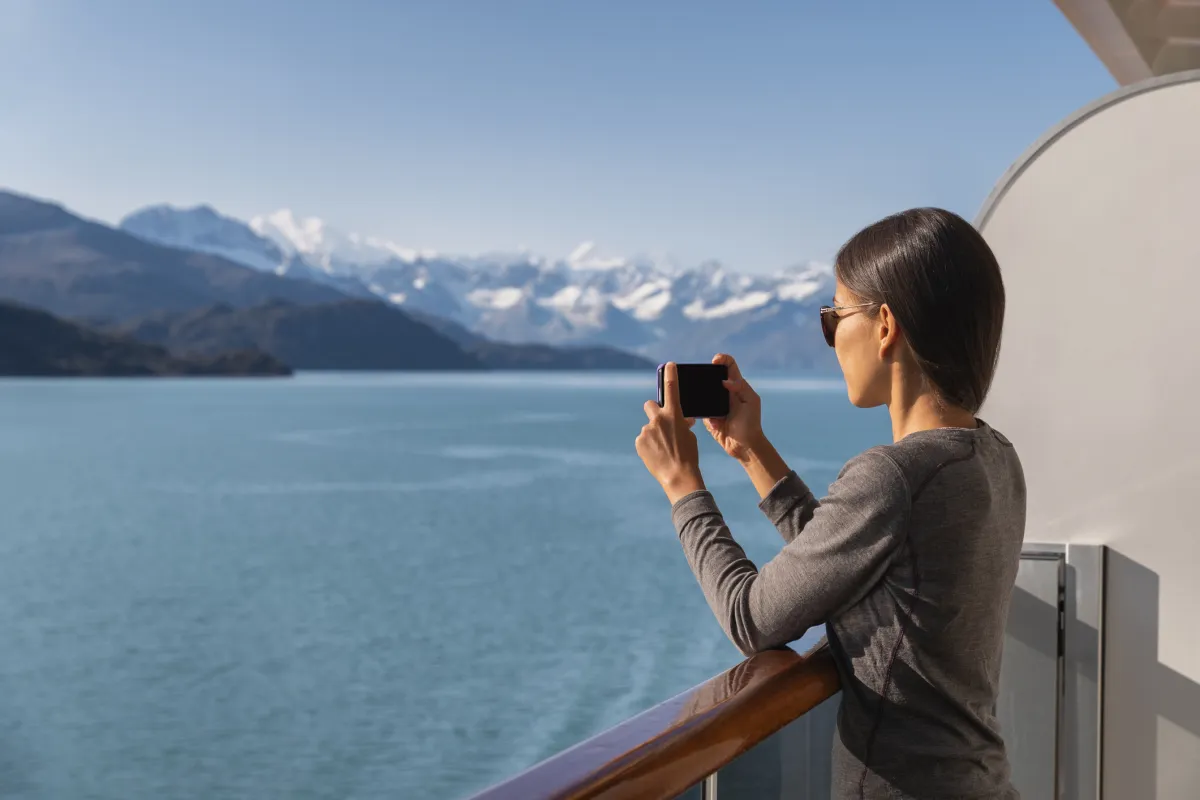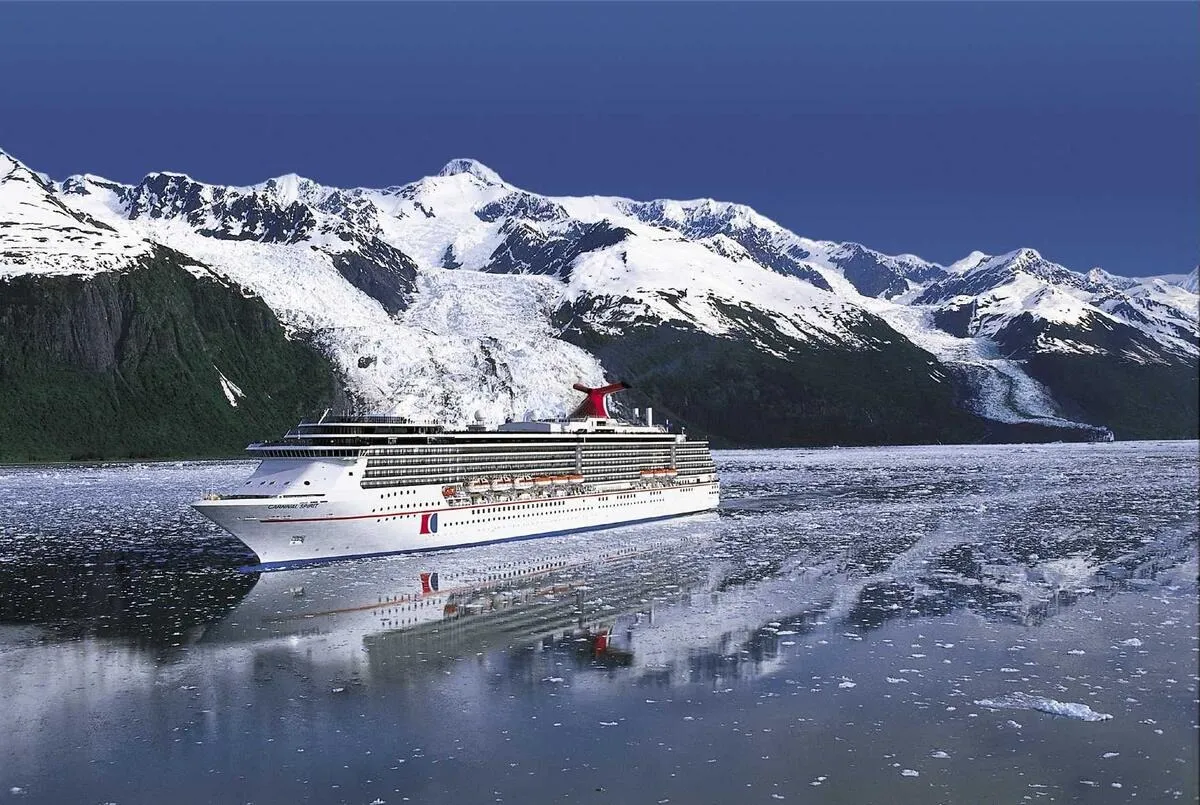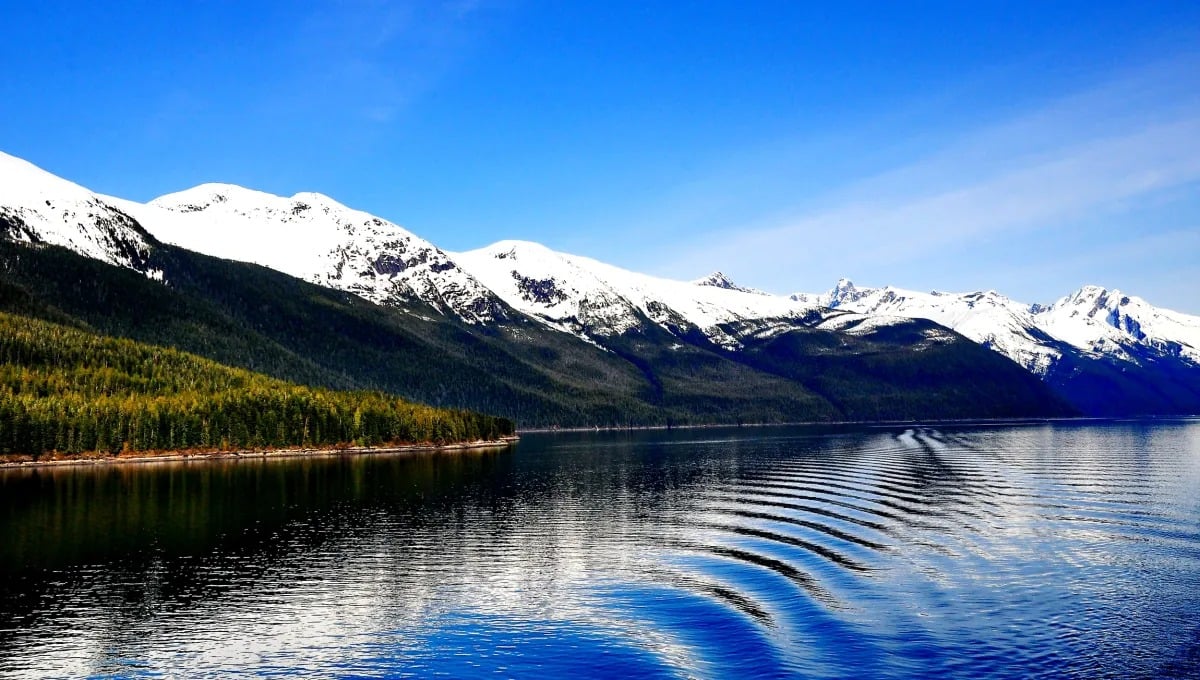
Cell phones and cruising is a topic full of questions and confusion. While your cell phone may work at sea and many of your ports of call, there are a few important things to know about using your cell phone while cruising to Alaska.
The good news is that your existing cell phone plan will most often cover many of the popular cruise ports you will visit on your cruise. However, there are a few areas that it may not, which can be frustrating to many passengers trying to stay connected.
Also, cruisers have been hit with unexpectedly high cell phone bills due to roaming costs levied by cell providers while sailing to this northern destination. That's not something anyone wants to come home to after an amazing cruise to the Last Frontier.
Here is what you need to know about using your cell phone during a cruise to Alaska.
Using your cell phone on a cruise - the basics

So many of us are dependent upon our cell phones and still want to use them on a cruise. Whether it's keeping in touch with family and friends or needing to check in with work, there are a whole range of reasons why people still use their cell phones while on a cruise. Leaving them at home is not an option for most people.
On land, we don’t give a thought to cell reception, but at sea, things are a little different. Cell phones work by sending radio signals to a cell phone tower, which then sends them along to the recipient of the call or text. The problem is that there really aren’t very many cell towers at sea, meaning that service is spotty and unreliable, if not completely unavailable, most of the time, even when in sight of land.
While you may have service in international ports through your cellular provider, don’t assume you will have cell coverage while sailing, especially out in the middle of the ocean on sea days. Of course, that doesn't mean you can’t use your cell phone while cruising to Alaska. Many cell providers such as AT&T and Verizon offer their customers packages for international travel; however, figuring out the ins and outs of these plans can be a cumbersome task, especially when stopping at ports in different countries.
Cell phones on a cruise to Alaska

While some providers have packages for guests to use while at sea, these can be extremely expensive, sometimes adding hundreds of dollars to your bill—a poor option for most people. It is best to put your phone on airplane mode to avoid the potential for a massive cell bill when you get home.
Buying a wi-fi/internet package is one of the easiest ways to keep in touch with family and friends and have access to your cell phone while cruising. Unlike most hotels, internet access is an extra charge when sailing, although some specific cabin types, like suites, may have plans free of charge. Additionally, many cruise lines, like Royal Caribbean and Celebrity Cruises, allow onboard guests to communicate via the cruise lines app at no extra charge. Regardless of the cruise line, you can purchase a wi-fi package, which will allow you to use apps like WhatsApp or Facetime to make phone calls. This is much cheaper than leaving your phone on roaming. However, you can't send or receive standard messages but can email and iMessage.
In terms of specific coverage for your carrier, there's a myriad of packages that differ by carrier and plan, so it is critical to check out what each option entails, specifically the prices per minute, text, data, and roaming charges. Once you leave a port and venture out to sea, the plan usually does not apply, and this is where the unexpectedly high phone bills come from. To mitigate this risk, it is a good idea to put your phone on airplane mode and enable wi-fi when embarking on a cruise ship in every port. In fact, cruise lines often suggest this to cruisers to avoid unnecessary charges.
Cell phone coverage while in port on an Alaska cruise

Although Alaska is part of the United States, you will be making a stop at a Canadian port like Victoria, and some even begin in Vancouver, Canada. Those are major cities with well-developed cell networks; just make sure you have coverage. Many U.S. providers cover Canada as part of their plans.
Even if you are close to land, especially in the calm waters of the Inside Passage, you should not assume that you can get access to the internet. Some cruise ships offer a cell at sea service, but these can be very expensive. If you want to go this route, make sure you have a clear understanding of the cost per minute as well as any extra charges.
If you look at a coverage map for your provider, you can see areas that are covered in Alaska. Surprisingly, even on a tour of the Inside Passage, you don’t have to go far out of the major ports, and coverage is diminished.
Coverage can vary by itinerary and add-on tours

Alaska is a big place; in fact, it covers over 365 million acres, and there is no cell phone plan that covers all of it. But when traveling to major Alaska ports like Juneau, you should expect to have cell phone coverage. However, many cruisers have noted that the major carriers have better coverage than the smaller players. It also depends on which port you go to.
If you are doing some more remote excursions, you may experience some areas where there is minimal cell service. For example, if your add-on land tour heads to Denali National Park, the Park Service advises that cell phone coverage exists only within three miles of the park entrance. So, if you are doing an add-on land tour and spending some time in the park, you need to plan accordingly.
If you are worried about this, it may be a good idea to go on a guided tour, especially a cruise line excursion, so there is no worry about getting back to the cruise ship on time.

